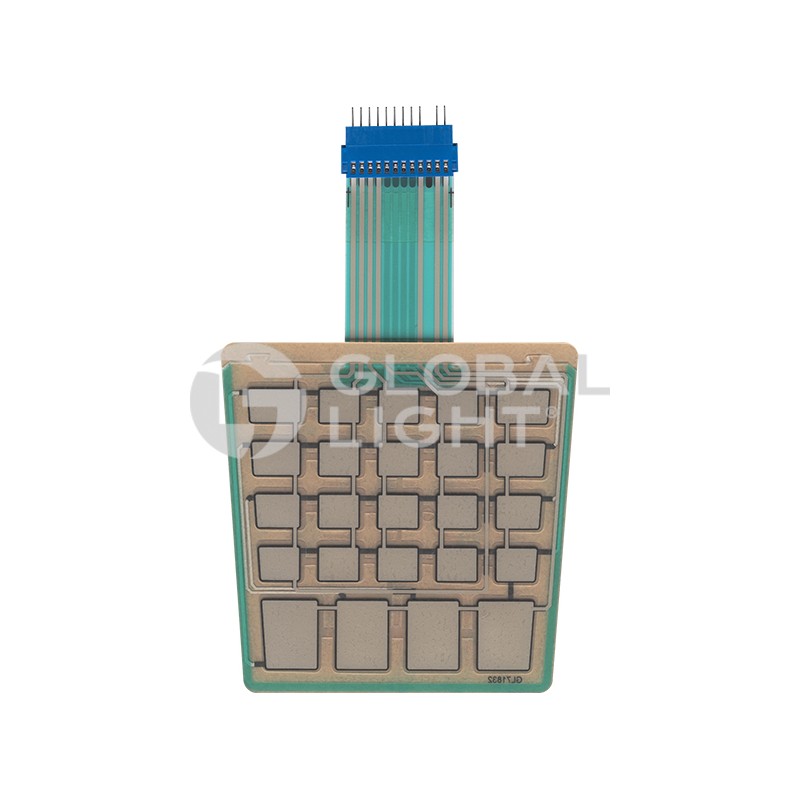Innovative Membrane Switch Solutions for Customized Control Panels
Innovative Membrane Switch Solutions for Customized Control Panels
Blog Article
Recognizing Membrane Switches: The Secret to Long Lasting and Dependable Controls

What Are Membrane Switches?
Membrane layer buttons are a sophisticated option in the world of interface innovation, combining capability and layout seamlessly. These gadgets work as an interface between users and electronic systems, integrating a number of components into a small style. Typically constructed from flexible, slim layers of materials, membrane layer buttons are designed to reply to touch, enabling users to connect with equipment and electronic gadgets efficiently.
The key components of a membrane layer button consist of a published circuit layer, graphic overlay, and a spacer layer that stops unexpected activation. The graphic overlay can be personalized to reflect brand identity or user preferences, enhancing appearances while making certain use. Membrane layer buttons are typically used in various applications, including clinical gadgets, consumer electronics, and industrial equipment, owing to their resilience and resistance to environmental variables such as wetness and dust.
One of the vital benefits of membrane buttons is their capability to withstand wear and tear, making them excellent for high-traffic settings. Additionally, they are light-weight and need very little area, permitting cutting-edge styles in product growth. On the whole, membrane switches over stand for a reliable and practical selection for contemporary electronic user interfaces, marrying innovation with user-centric layout principles.
How Membrane Layer Switches Work
The operation of membrane switches over joints on a basic yet effective system that translates individual input right into electronic signals. These buttons contain multiple layers, normally including a graphic overlay, a spacer layer, and a circuit layer. When a customer presses the button, the top layer flaws, allowing a conductive aspect in the circuit layer to make call with a matching conductive pad on the bottom of the visuals overlay. This get in touch with shuts the circuit and sends an electronic signal to the gadget, showing that the switch has been triggered.
The layout of membrane switches can vary, however they usually include domes or responsive elements to offer comments to the individual, improving the overall experience - membrane switch. The materials utilized in membrane switches, such as polyester or polycarbonate, contribute to their longevity and resistance to ecological elements, consisting of moisture and dirt. Moreover, the published circuits are typically encapsulated, which safeguards them from deterioration gradually.
Advantages of Membrane Layer Buttons

In addition, membrane layer switches are understood for their longevity. Constructed from robust materials, they are resistant to dust, wetness, and physical wear, which dramatically prolongs their original site life expectancy contrasted to standard mechanical buttons. This longevity makes them especially appropriate for high-traffic settings and applications requiring longevity.
Another significant benefit is the ease of cleaning and maintenance. The smooth surface of membrane layer switches over lessens dirt buildup and is often impervious to spills, making them perfect for settings that require regular sanitization.
In addition, membrane layer switches provide a streamlined account, bring about a thinner layout that can be integrated right into numerous gadgets without adding bulk. This attribute not just improves the aesthetic charm however also adds to an extra ergonomic item design.
Applications of Membrane Buttons
User-friendly and versatile, membrane layer buttons locate applications throughout a large range of industries, consisting of medical tools, consumer electronic devices, and industrial equipment. In the medical field, these buttons are integral to tools such as diagnostic equipment, person tracking systems, and infusion pumps, where integrity and convenience of cleansing are crucial. Their capacity to stand up to severe settings and maintain capability makes them optimal for such applications.

In customer electronic devices, membrane buttons are made use of in products like microwaves, cleaning machines, and push-button controls - membrane switch. Their sleek layout allows for user-friendly interface, improving the total user experience while providing durability and resistance to put on and tear
Industrial devices also Resources gains from membrane layer buttons, specifically in control panels for machinery and automation systems. These switches use defense versus dust and moisture, making certain consistent performance in difficult atmospheres. Their customizable functions enable makers to customize them to certain operational requirements, improving effectiveness and performance.
Selecting the Right Membrane Layer Switch Over
When selecting a membrane switch, it is important to think about different elements that influence efficiency and viability for certain applications. The main considerations include environmental problems, tactile feedback, sturdiness, and style specs.
First, evaluate the operating environment; buttons subjected to wetness, chemicals, or extreme temperature levels call for certain materials to ensure longevity and performance. Next, review the demand for tactile feedback. Relying on individual interaction, some applications might benefit from a tactile reaction to confirm activation, while others might like a non-tactile design for aesthetic reasons.
Sturdiness is another essential element; membrane layer switches should be made to stand up to frequent usage, impacts, and abrasion. Ensure the chosen button can withstand the anticipated lifecycle, especially in high-usage scenarios.

Final Thought
In conclusion, membrane layer switches over serve as vital parts in the design of sturdy and trustworthy control systems throughout numerous sectors. The adaptability of membrane changes allows for customized solutions that fulfill particular functional demands, reinforcing their importance in modern-day innovation.
Membrane changes stand for an important facet of modern interface style, mixing capability with strength in numerous applications.Membrane layer buttons are a sophisticated service in the world of customer interface modern technology, combining functionality and layout perfectly. Normally created from adaptable, slim layers of products, membrane layer buttons are made to respond to touch, allowing users to connect with equipment and digital tools effectively.
The design of membrane layer buttons can vary, however they usually incorporate domes view publisher site or responsive components to give responses to the individual, improving the general experience.In final thought, membrane switches serve as essential components in the layout of trustworthy and long lasting control systems throughout different markets.
Report this page